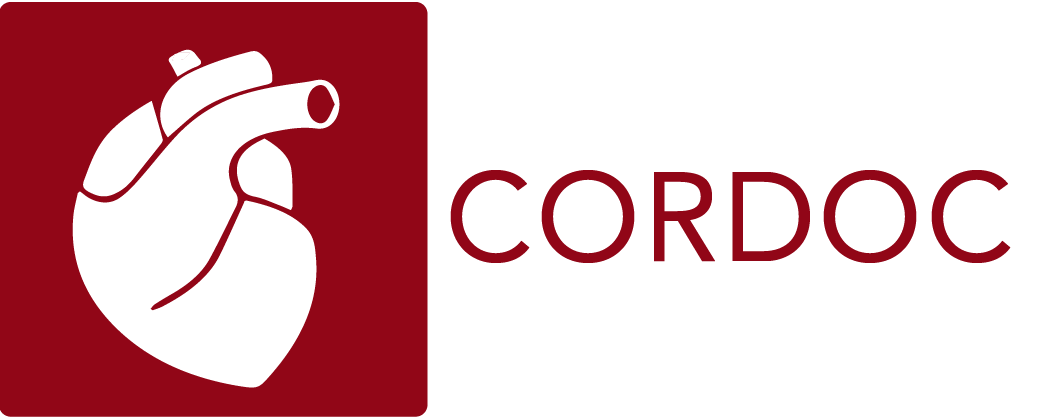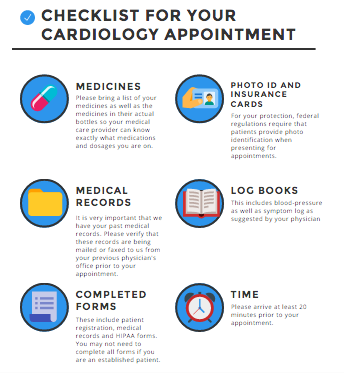A transesophageal echocardiogram (TEE) offers better picture quality compared to a transthoracic echocardiogram (TTE), particularly of the heart valves. A TEE is commonly performed to evaluate for a thrombus (blood clot), heart valve infection (endocarditis), heart valve dysfunction and diseases of the aorta. It is also often performed to guide heart surgery.
General instructions:
- Abstain from food and beverages (other than clear liquids) for a minimum of 6 hours before the planned procedure and restrain from all intake for 3 hours before the procedure
- Bring recent lab results and an up-to-date list of allergies and medications

- After the procedure, do not eat or drink anything for one hour until all local anesthetic and sedation has metabolized
- Bring a driver to drive you home
- If pain while eating or swallowing lasts for more than one day, call physician’s office AND go to an ER for evaluation
Mental rehearsal:
- You will be asked to sign a consent form for the procedure. The form mentions that the procedure has been explained to you in detail (including risks of the procedure) and all of your questions have been answered
- The test is carried out with you lying on your left side or sitting up in a bed
- You will be hooked up to monitors to continuously monitor heart rate, blood pressure, and blood oxygen level
- The nurse or technician will place an IV line in your arm
- You will be asked to gargle a local anesthetic solution to help numb the back of your throat. In addition, the doctor may choose to use a spray for additional numbing.
- Your throat will feel cool and you may get a bitter taste in your mouth
- In order to protect your teeth and allow the probe to pass over your teeth comfortably you will be asked to hold a bite guard in your mouth
- You will receive a mild sedative through the IV line. This will take the edge off, but you will not usually be knocked out. You will remain somewhat alert.
- The physician will then place the probe at the back of your throat and ask you to swallow it. You may gag for a few seconds during this part. This is the most uncomfortable part of the procedure. Some patients have described this as swallowing a piece of meat without chewing it. Many patients are comfortable through the procedure and do not remember this uncomfortable part
- The physician and technician will take pictures of your heart for the next 15 to 20 minutes
- After the procedure, you will be asked to stay in bed for observation for about 30 minutes
- You may have some mild pain or difficulty swallowing food that will last for few hours. If pain while eating or swallowing is severe or lasts for more than one day, call the physician’s office AND go to an ER for evaluation
Major risks:
- Risk of death: 1 out of 10,000
- Major complication: 1 out of 500
- Major bleeding: less than 1 out of 10,000
- Esophageal perforation: less than 1 out of 10,000
- Heart failure: 1 out of 2,000
- Arrhythmia: 1 out of 333
- Tracheal intubation: 1 out of 5,000
- Dysphagia: 1 out of 56
- Minor bleeding: 1 out of 5,000 – 10, 000
- Hoarseness: 1 out of 8
- Lip injury: 1 out of 7
- Dental injury: 1 out of 1,000
- Overall complication rate (minor and major combined): 0.18 to 2.8 out of 100
Checklist:
- Allergies
- Current medications: including anticoagulants, cardiac medicines, and SSRI (for methylene blue)
- Anticoagulation: INR ___________, Anti-Xa __________, DOAC adherence ________
- History of cardiac procedures or surgery
- History of sleep apnea
- History of complications with anesthetic medications
- Difficulty swallowing meat
- Contraindications to procedure

- Global health status
- Neck range mobility and adequate oral opening
- Airway:
- Class 0: Ability to see any part of the epiglottis upon mouth opening and tongue protrusion
- Class I: Soft palate, fauces, uvula, pillars visible
- Class II: Soft palate, fauces, uvula visible
- Class III: Soft palate, base of uvula visible
- Class IV: Soft palate not visible at all
Commonly used drugs and doses:
- Midazolam (Versed®): 2 mg to 10 mg
- Fentanyl: 25 mcg to 100 mcg
- Propofol
Rarely needed drugs and doses:
- Flumazenil: 0.2 mg, followed by 0.2 mg/every minute
- Naloxone: 0.4 mg once
- Methylene blue 1 %: 1 to 2 mg/kg over five minutes, 1 mL = 10 mg
Videos to watch before the procedure:
- A cardiologist demonstrates the procedure
- Animation to assist with mental rehearsal of the procedure
Reference:




